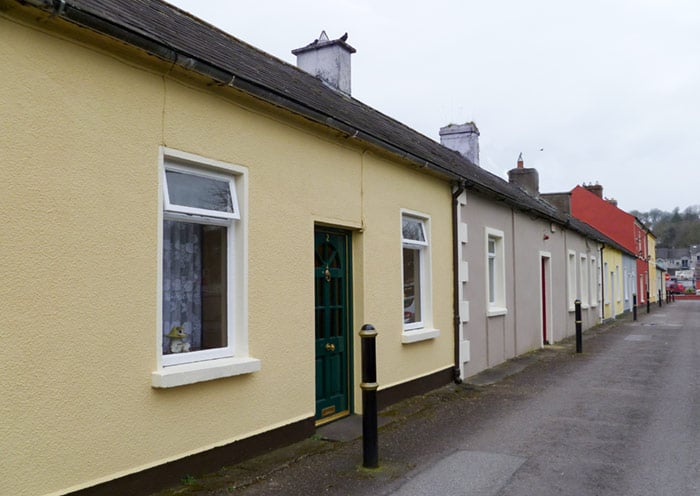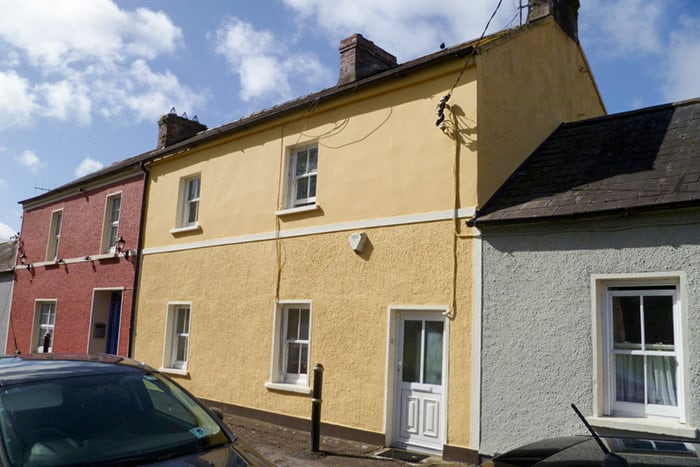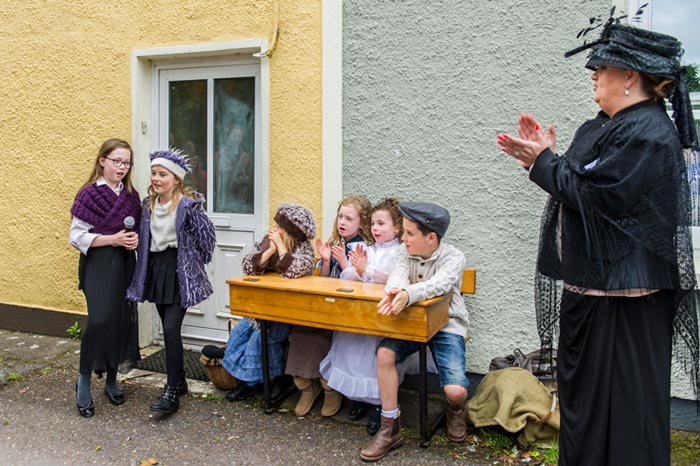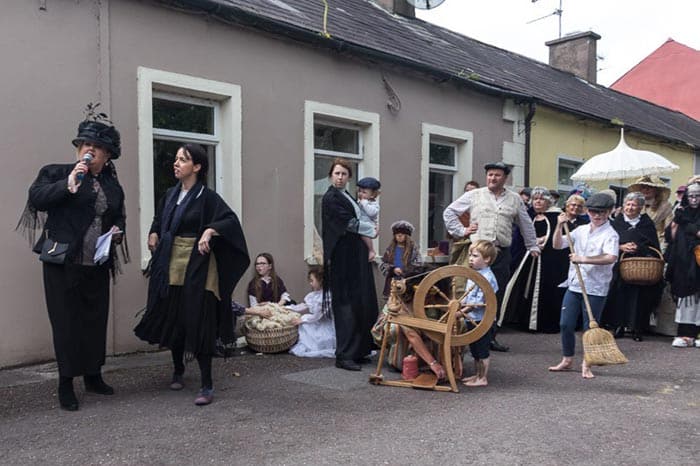Stop 7. Houses around the Square
History
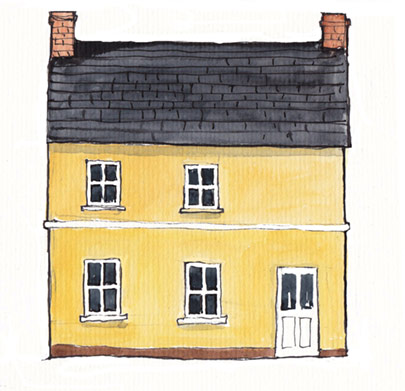
Because of its proximity to the rivers, Blarney was a key part of the national linen industry. In 1766, to cater for this, James St John Jefferyes constructed a series of houses and a bleaching green. An 1801 map shows the weavers’ houses were located around the four sides of ‘The Square’.
West Side Story
What’s very interesting about the houses on this west side of ‘The Square’ is that they are all the original houses dating back to 1766. Although some would affectionately call this street ‘Pump Street’ because of an old water pump that had been located nearby (the water pump you see today is not the original and is a very recent addition.), the residents prefer the official address which is quite simply ‘The Square’. These houses were built for weavers so quite literally, the village was built to support the weaving industry and that alone! The skills required for weaving not always available locally, meant that weavers were nearly all brought in from Northern Ireland or other parts of West Cork where the linen industry was strong at the time.
Tight Fit!
Take a second look at these picturesque houses scattered around ‘The Square’. You are not just looking at a home where you could close your door and your home was your castle! The reality was very different and each home would have been buzzing with industry. The houses were occupied by the worker, his wife & family, at a time when a new baby could be born every year; therefore large families were the norm! The same family then had to take in two apprentice weavers per house and it is told that in each of these houses you see before you, there were four looms. The factories depended on the woven cloth so they depended on the weavers to actually make the cloth which was then taken over to be bleached. One may look at the little houses and wonder how everyone managed to live like that…but it didn’t stop there much to Ireland’s shame…
Child Labour & Charters
One thing about the reports of the early industries in Blarney that shocks to the core, is the huge number of children who were employed even from the age of five.
Charter Schools were for the poor and the orphaned and were pretty close to what was described by Charles Dickens in Oliver Twist. Some of the Charter children from the Charter school in Inniscarra, became the apprentices for the factories here in Blarney and worked the same hours as the adults.
School Days in Blarney
In 1838/1839 the first national school opened in Blarney in the two storey house in this street. Previous to that, the children of Blarney had to walk about 1 1/2 miles up to Waterloo to go to school so it was a big event when there was a school in the village. A Mr. Eugene Cotter was the principal teacher here in this little school when he moved to the new Colthurst School in 1898 on nearby St. Ann’s Road and the school on the Square closed.
Barracks
In 1801, the Barracks was a sizable galvanized building located inside a walled and gated enclosure with 2 large pillars at the entrance. In later years the building was painted a scarlet red colour. Behind the wall was also a number of small houses. To local wags, it became known as ‘The Red City’.
Guardhouse – Stealing the Sheets!
On the 1800 map of Blarney, at the corner of the west side of ‘The Square’ there was a guardhouse; a little sentinel where they were able to look out at the surrounding fields. Now, you might wonder why you needed a guardhouse.
Blarney was very much linked to the linen industry. Long rolls of woven grey linen were subjected to a chemical process in the adjoining bleaching mills; the first stage of the industrial process to be mechanised in Blarney. When the linen was bleached, it was woven into big sheets up to 30 or 40 metres long which had to be put out in the sun for months at a time. The flat fields around here were ideal for it. The rolls of bleached linen were stretched out in the bleaching fields and had to be watered in order to be kept damp at all times. Irish weather must have been better in those days! Over the months, the sunlight turned the grey bleached linen into a dazzling white. Those bleached sheets were very valuable pieces lying out in the sun and some would see that as almost an invitation to steal them! That’s why there had to be a guardhouse!
Photos

